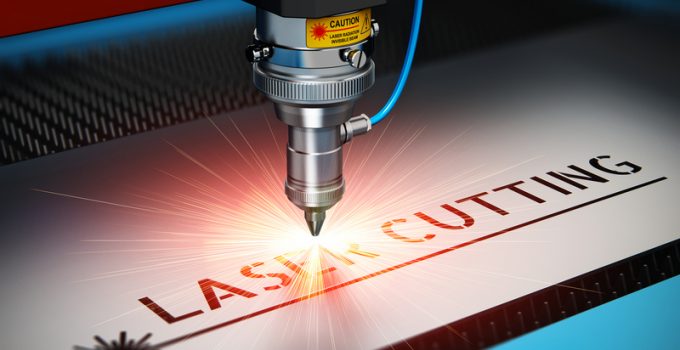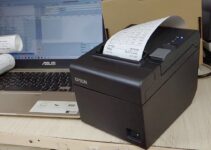If your knowledge about laser technology starts and ends with Star Wars and Star Trek sagas, then you are probably unfamiliar with what type of laser technology they might have used in the filming sessions, so it would be hard for you to decide whether it was the laser marking or laser engraving technique. Jokes aside, but what was before solely a part of our imagination now is a standardized process present in numerous industries without which we would not be able to live life as we know it. Thus, read the following lines and find out what are the main differences between these two principles, and see what are they used for.
To simplify how lasers function, we should first clarify the meaning of the acronym. Namely, the abbreviation ‘laser’ stands for “Light Amplification by Stimulated Emission of Radiation”, thus, now you are aware of what the word truly represents the term should be self-explanatory. But, let us break it up a bit more. In order to utilize any laser beam, we need to start from a radiation source. Surely, we do not think of radioactive materials, but any source of light that could later be amplified and directed to the desired location. Surely, the stronger the emission is the stronger would be the laser, which brings us to the topic of our discussion.
Types of Lasers

You can magnify the beam of light in numerous ways, and after the amplification, it gets to the laser. When it comes to lasers, the most frequent models are Fiber, CO2, and YAG lasers. Although they are seemingly different, they can all provide you with both quality marking and engraving. What makes them special is that they are particularly designed to treat characteristic materials. For example, a type of CO2 laser is used to treat various skin conditions, but the same technology is used for industrial welds. Apart from the finesses, the models crafted for medicinal and industrial purposes have different power outputs, which indicates how widely applicable this technology is. The 3 main categories of lasers are, therefore, used to treat different materials with a higher or lower level of performance.
Laser Marking

One of the most important differences between laser marking and laser engraving is the level of penetration they cause while the laser performs. Namely, you would want to apply laser marking when the surface you want to treat needs as least disturbance as possible. Therefore, this method is ideal for branding, but you can also use it to mark barcodes or QR codes, company logos, or any other insignia that needs not to bounce of its surroundings. Also, the important thing to mention regarding this type of laser treating is the usage it has in the medicinal industry. Namely, the heating causes changes on a chemical level which changes the color instead of alternating the structure, which is crucial for surgical equipment. Depending on the type of material treated, there are 4 most recognizable representations of laser marking.
Carbon migration is specific since the laser warms the area and extracts the carbon out on the surface, leaving different shades visible. Annealing is used for metals and metal alloys, while you would use foaming mostly for plastic elements you want to mark. The most interesting would be the coloring, which enables the user to choose the colors which would be added to the method of labeling. Depending on the substance and the idea, the colors are applied during the heating procedure.
Laser Engraving
If we talk about laser engraving, we think about a more penetrable technique than laser marking is, which makes it suitable for more rough-and-ready projects. Namely, laser engraving is based on physically excluding a portion of a treated exterior, leaving the desired shape inscribed. It is arranged by either discharging or evaporating the desired portion, so depending on how much body is being eliminated, we have 3 varieties of laser engraving. Logically, deep laser engraving considers that the engraved piece is deeply embedded and it is applied to objects that are meant to withstand either physical or chemical exposure but still preserve the engraving. You would like to use these laser engravers for metal, so check hispeedlaser.com for additional info. The most characteristic example of deep laser engraving would be a serial number on a pistol.
If you would need to perform a less aggressive method, you would use laser etching, which is the same procedure only more invasive than laser marking but a milder form of a deep engraving. Namely, the laser warms the exterior up and builds a dent which is usually not deeper than 0.001”. After the process is finished what you will see is an elegant engraving shaped according to your idea.
Finally, we have laser ablation where the point is to perform the engraving by removing one layer of the treated surface. It is done so the primary coating is removed to either show the layer from below or to simply show the difference by highlighting the various layers. If you look at your keyboard you would be able to notice this type of laser engraving under your fingertips.
Hopefully, the aforementioned pieces of information have enabled you to figure out the main distinctions among the laser marking and laser engraving methods. Although they might seem utterly different, they use similar technology so modifying particular pieces of a single laser could bring you more than initially expected. It is amazing how a thing from someone’s imagination can come to life and help us shape the world in a totally different manner than it was a few decades ago. The best thing about this type of technology is that it is still developing and enables more appliances as time goes by and it is a trend that does not seem to be changing its direction any time in the near future. Therefore, try to figure out the basics soon so you could keep up with the novelties.







